
It goes on, 'In the 1540s, the palace was home to James V's wife, Mary of Guise, and their young daughter, Mary Queen of Scots. It was known from royal inventories that when James V built the palace he owned more than 100 tapestries, but there is no record of what happened to them. The inventories, however, described a set of tapestries depicting "the historie of the unicorne"... Peter Buchanan, Historic Scotland's project manager who oversaw the process, said it had been a "privilege to watch" the weavers recreate the tapestries "in all their Renaissance glory"... He said: "Whilst we may never know what happened to the original tapestries, the fact that we now have these fantastic recreations, with the assistance of the Met in New York and through the generosity of our donors, will provide visitors to the castle now, and for generations to come, with a real insight into how the palace may have been at the time of James V.'
Like the The Hunt for the Unicorn, these tapestries represent, in the words of the Cluny curators, "a crossroads between two historical eras--that we nowadays call the Middle Ages and the Renaissance--in blurring the boundaries between the real and the imaginary ... and merging the secular and spiritual worlds."
Below, left, Sense of Taste; right, Sense of Touch.
Long live the Scottish Unicorn!

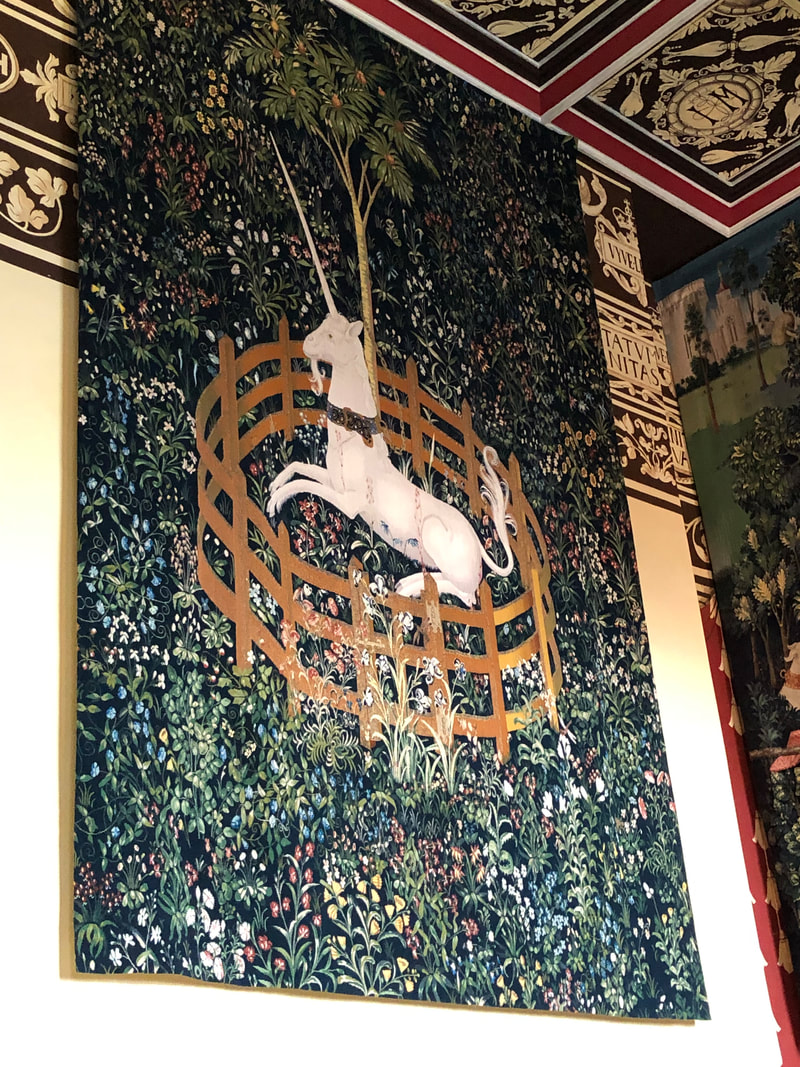
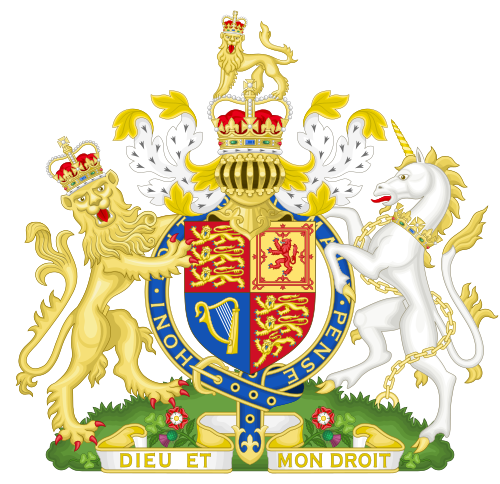
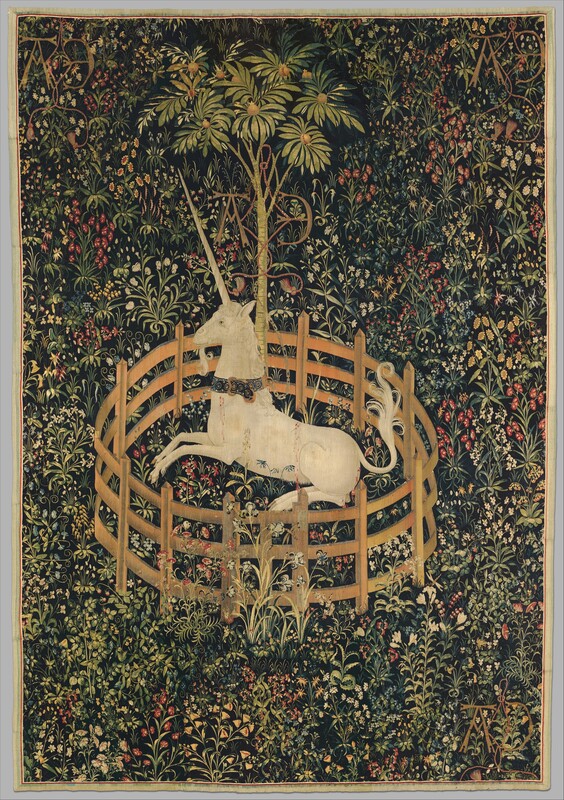
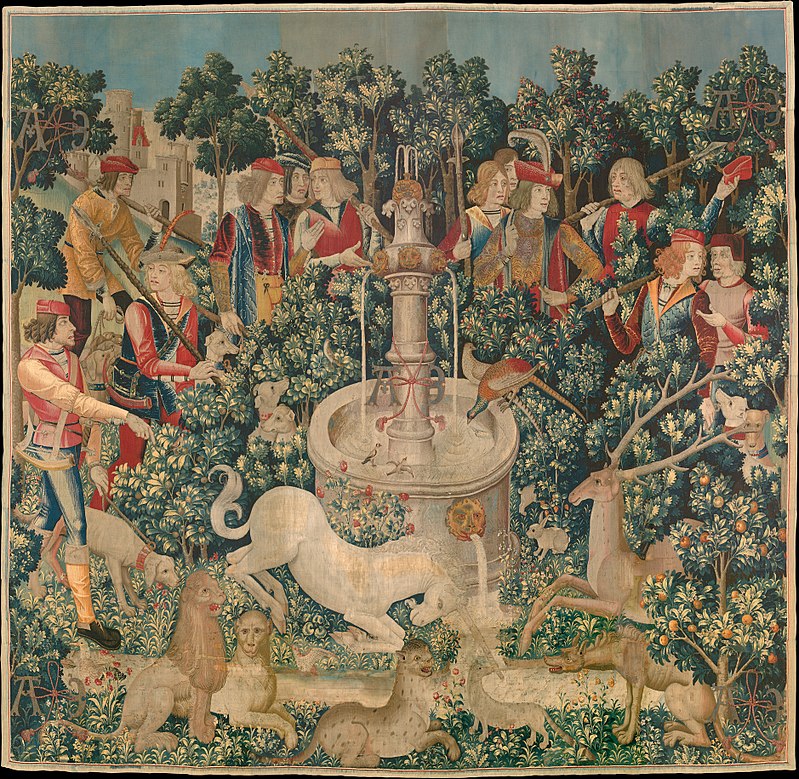
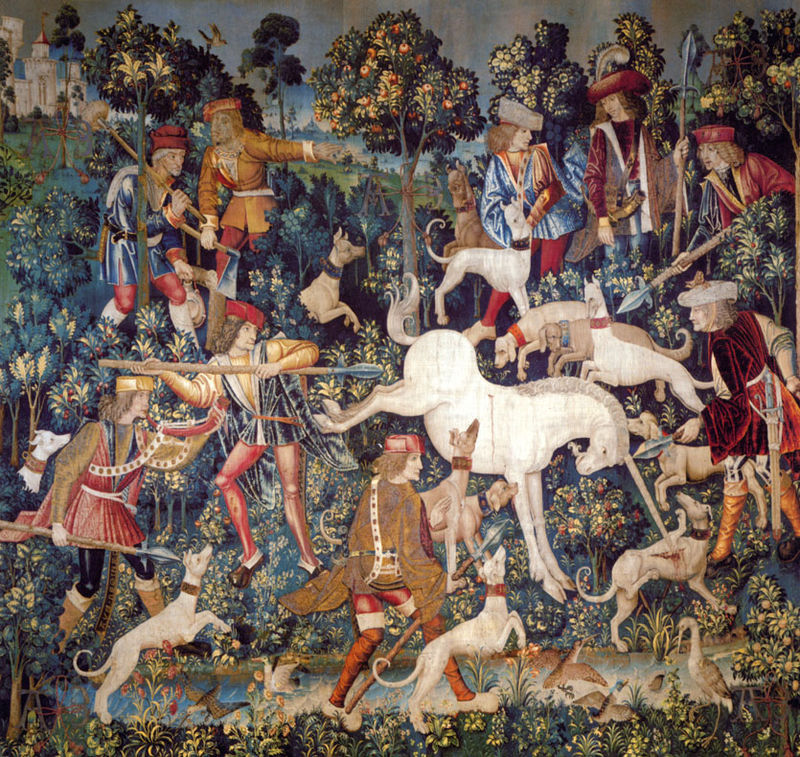
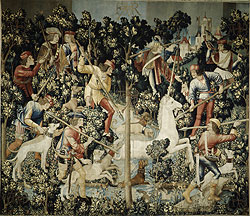
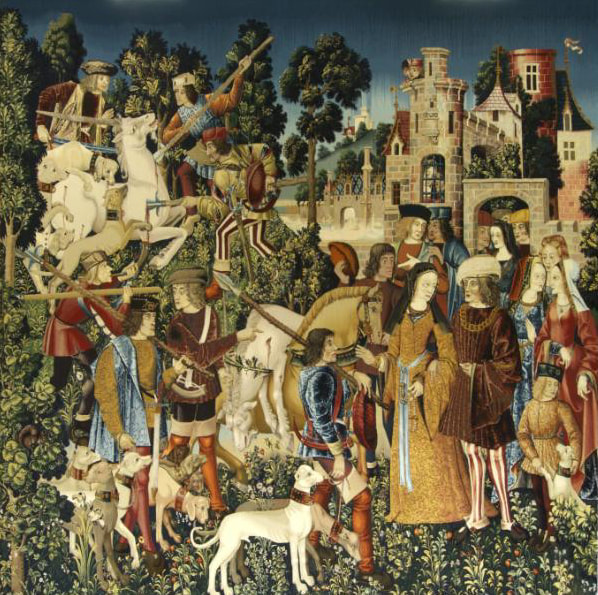
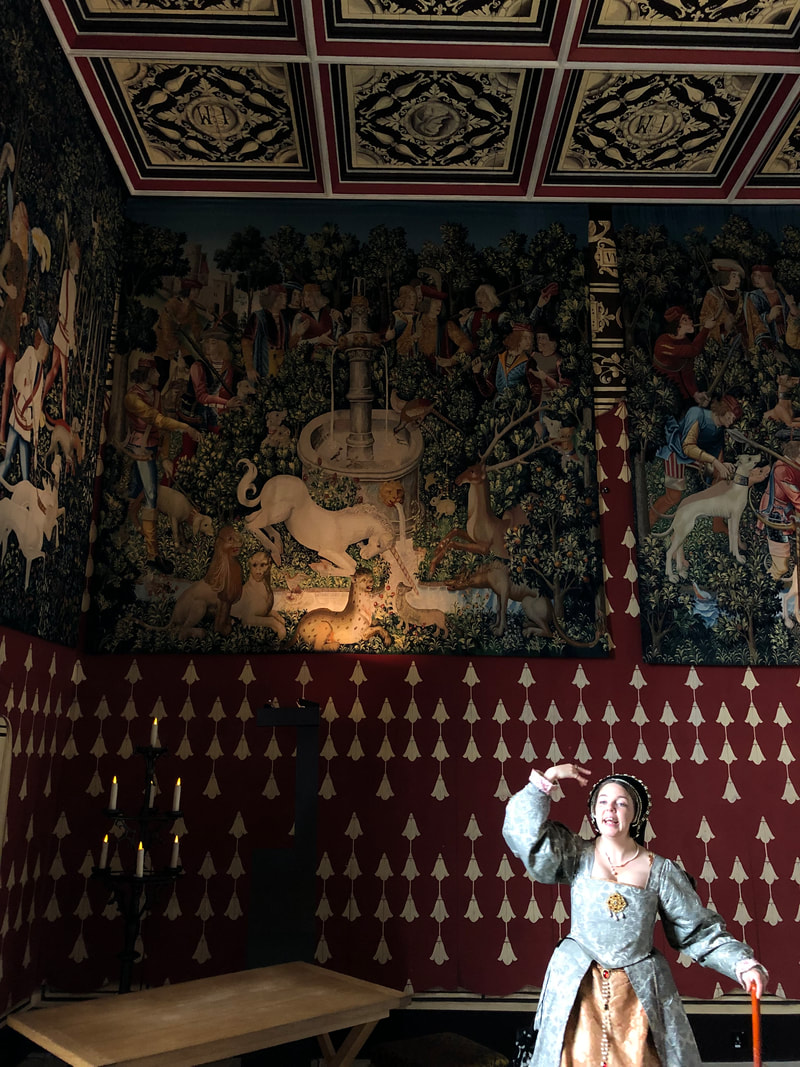
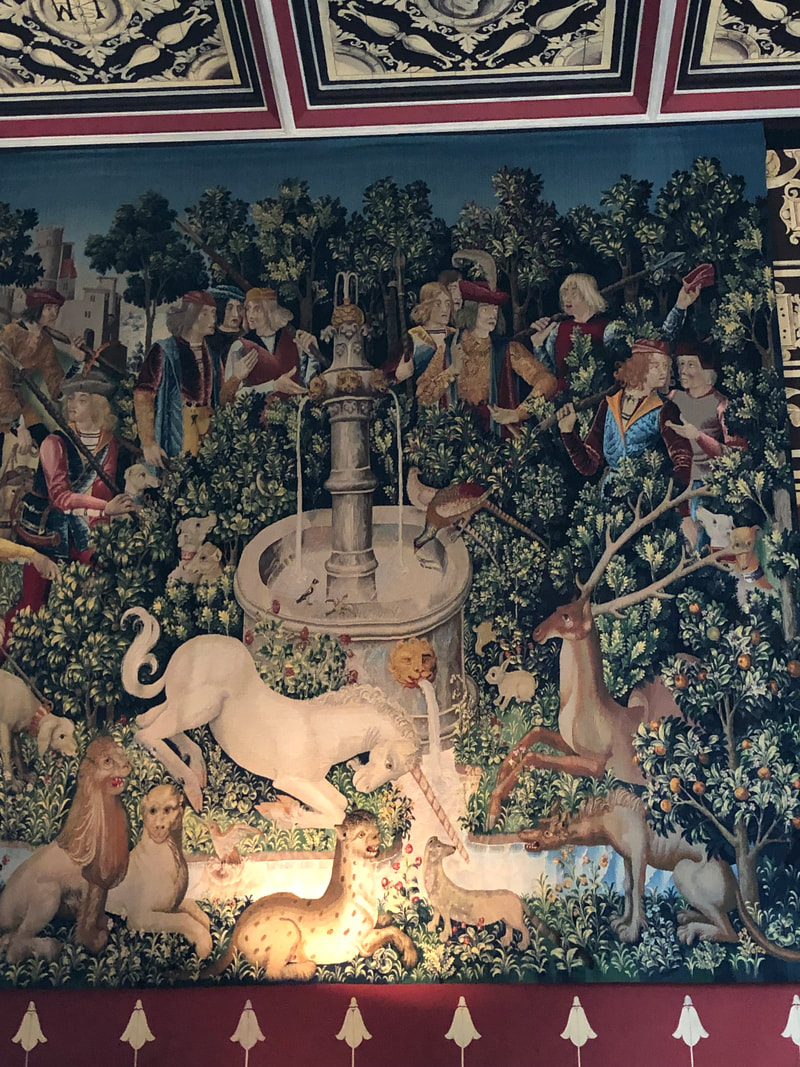

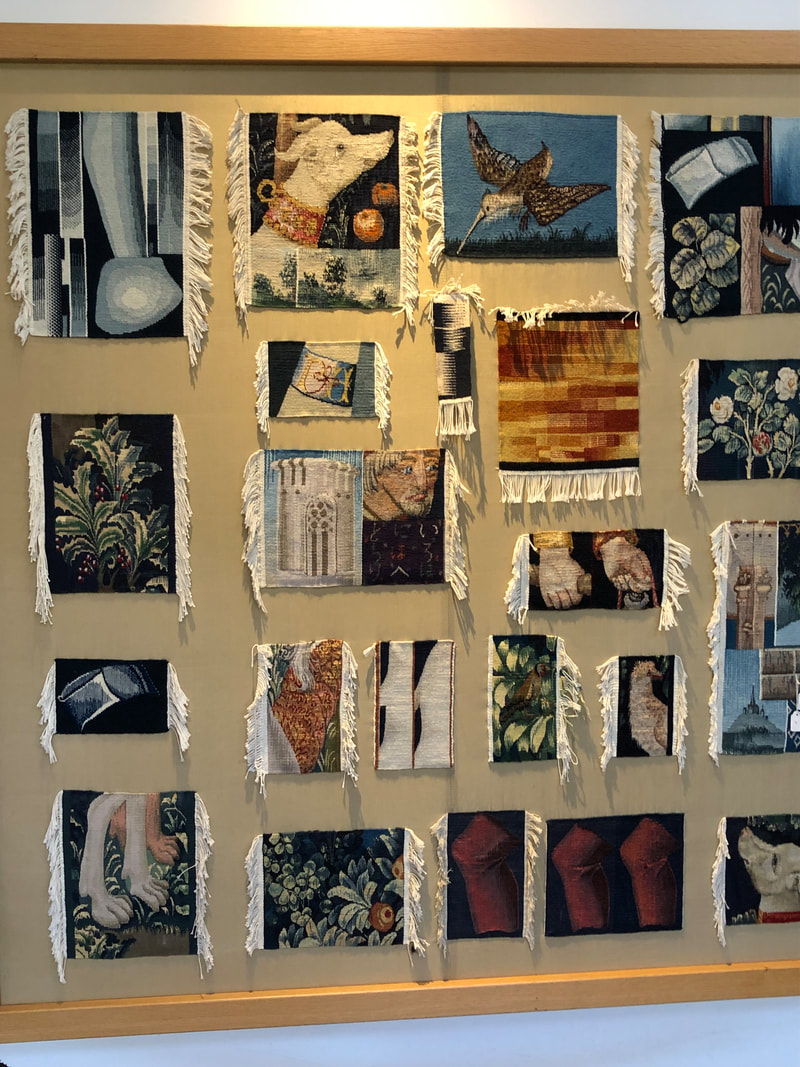
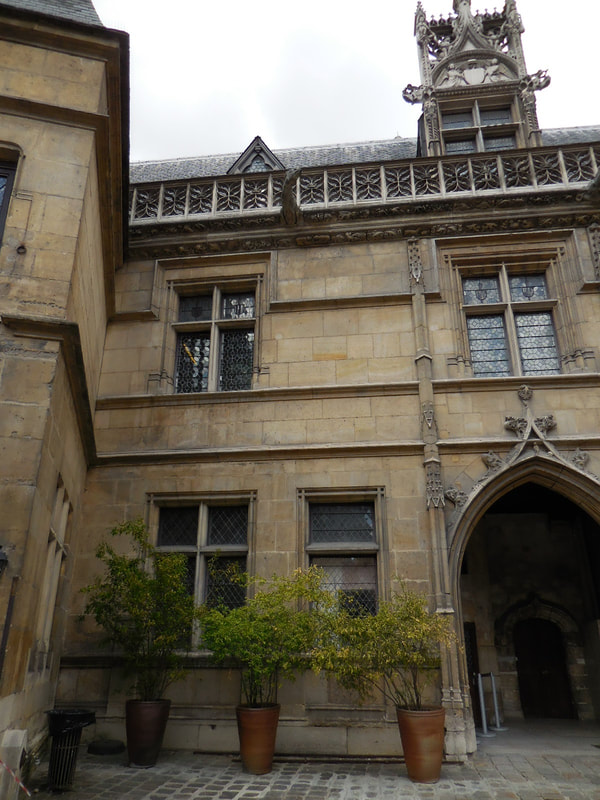

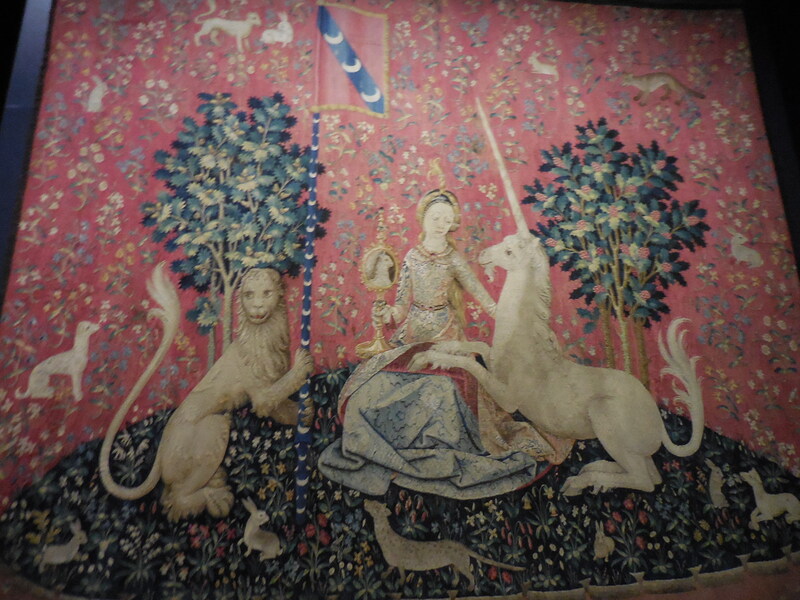
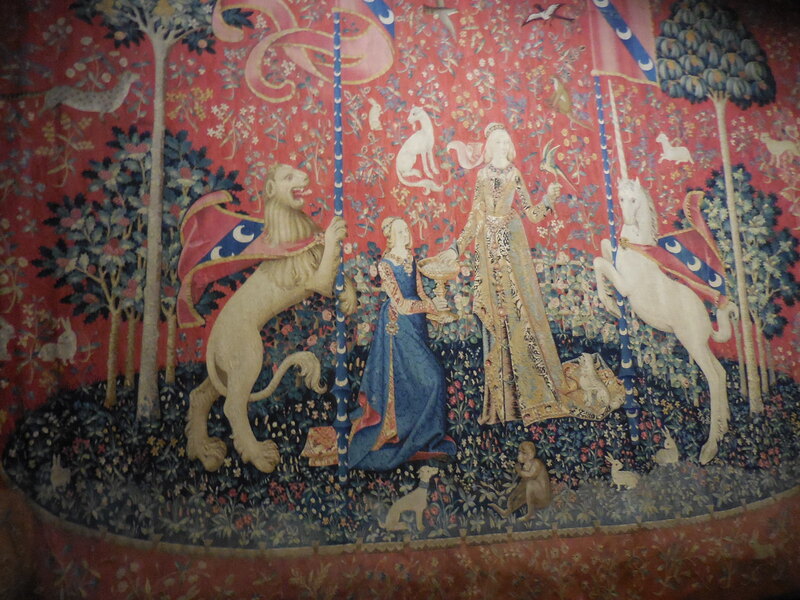


 RSS Feed
RSS Feed